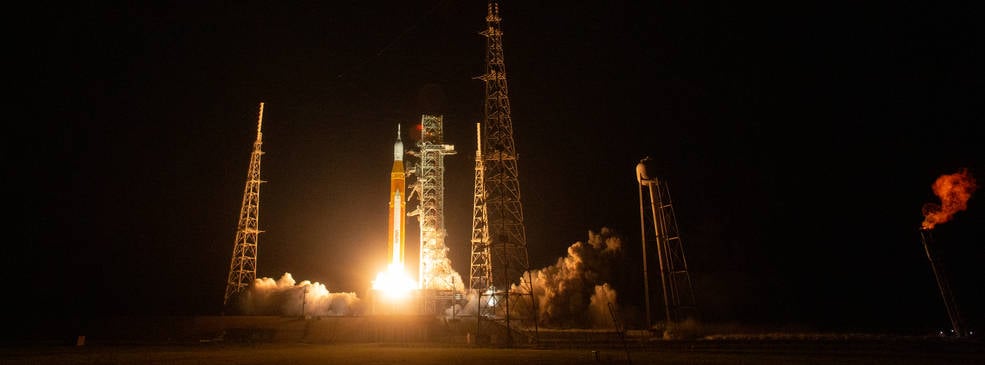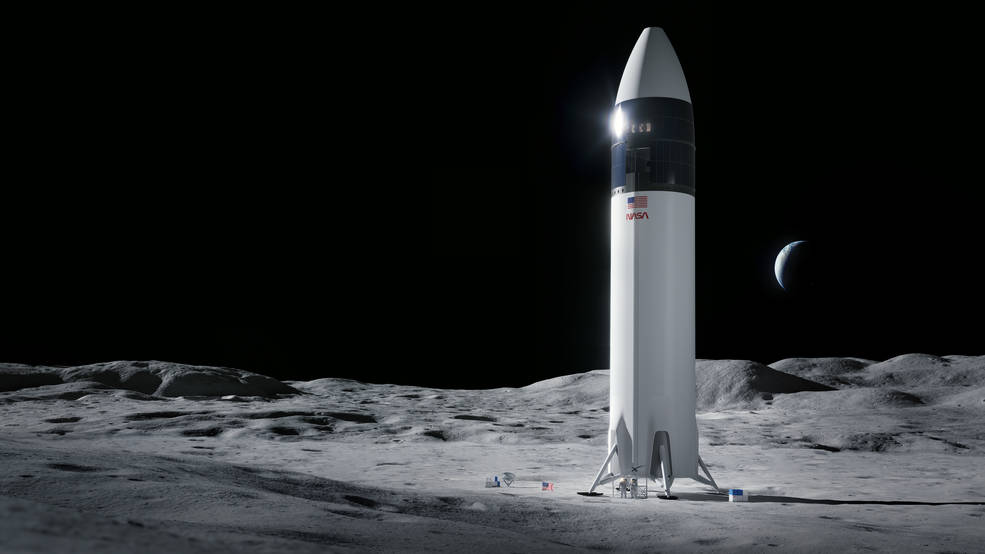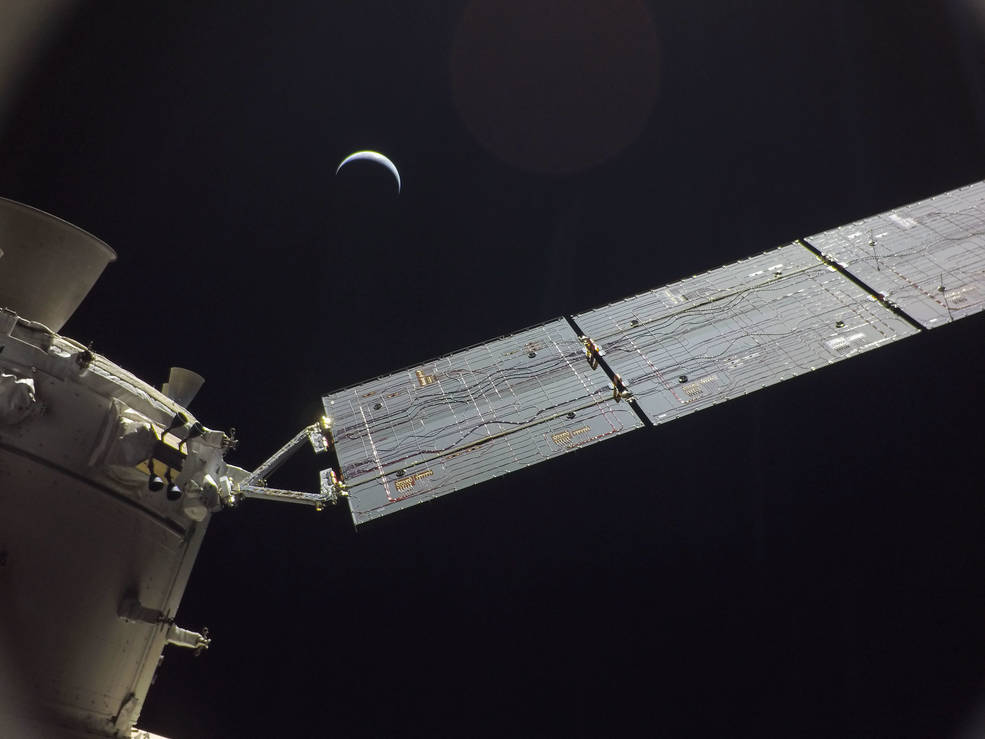The Artemis III mission by 2025 will be historic as it will be the first human mission to the mysterious south pole region of the moon. The mission will be executed by a four-person crew selected from the most diverse group of astronauts in history. Two members of the crew will drop to the lunar surface, while the other two will remain in lunar orbit. [1]
The mission will begin with the launch of the Space Launch System (SLS) rocket from NASA’s Kennedy Space Center in Florida. The Orion spacecraft, equipped with a specially built heat shield, will transport the crew between Earth and lunar orbit and to and from Earth. Once in lunar orbit, the crew will do system checks and adjust the solar panels, and then the SLS’s interim cryogenic propulsion stage will assist Orion in performing a translunar injection maneuver, which will establish the spacecraft’s route toward the Moon.

Space X to deliver the human landing technology
SpaceX has been chosen to deliver the human landing technology that will transfer the two-person surface crew from Orion in lunar orbit to the Moon’s surface and back. SpaceX will launch a propellant storage depot into Earth orbit before to the launch, which will be supplied with propellant from a series of reusable tankers. The unmanned Starship human landing system will launch into Earth orbit and dock with the storage depot prior to executing a translunar injection engine run and flying to the Near-Rectangular Halo Orbit (NRHO).
Once both the Orion and Starship human landing systems have arrived at NRHO, the Orion will dock with the Starship in order to deliver the two-person surface crew to the Moon’s surface. The crew will then don upgraded spacesuits from Axiom Space before descending in the elevator of the starship.

Mission control staff on the ground will be in contact with the crew as they communicate what they see, hear, and feel during their moonwalks. Through mission coverage and the capacity to transmit high-quality photographs and video to the ground using cutting-edge communication technologies, they will share with the world a novel and unprecedented human experience.
Exploring the region around the south pole
To fulfill the designated scientific objectives of the mission, the crew will explore the region around the south pole of the moon by taking photographs and videos, studying the geology, retrieving samples, and collecting other data. The view from the lunar South Pole region will differ greatly from the images captured by Apollo missions in the equatorial zone of the Moon.
The Sun will be hovering just above the horizon, sending long, dark shadows across the landscape, which the team will explore using headlights and navigational instruments. The data and materials obtained by Artemis III astronauts will enhance our knowledge of the mysterious South Pole region, the Moon, and our solar system.

After the surface expedition concludes, the two astronauts will return to NRHO to reunite with the Orion crew. Following docking, the crew will spend up to five days in orbit transporting samples and preparing for the return trip to Earth.
Orion will then slingshot past the Moon and let it to coast toward Earth at a speed of 24,855 mph during entrance into the Earth’s atmosphere. The spacecraft is scheduled to land in the Pacific Ocean, where the U.S. Coast Guard and U.S. Navy will rescue the spacecraft and its crew.
Purpose of Artemis III
Artemis III will expand our knowledge of the lunar south pole region and pave the way for future human exploration missions. As we prepare for the first human voyage to Mars, each Artemis mission will expand our understanding, enhance our procedures, and advance our technology. This mission will also inspire the next generation of space explorers, as the crew’s observations, samples, and data will increase our knowledge of the solar system and Earth.
The mission will also demonstrate the capabilities of SpaceX’s Starship human landing technology and the new SLS rocket and Orion capsule. The operation needs a great deal of cooperation between the participating agencies and businesses, as well as rigorous testing and planning. To ensure the crew’s safety and the mission’s success, the mission must also satisfy a number of stringent safety and performance requirements.
Mission coverage of Artemis III
Artemis III will also include extensive public engagement. The crew will share their experience with the globe via mission coverage and by transmitting high-quality photographs and videos to the ground using cutting-edge communication technologies. NASA thinks this project will inspire the next generation of space explorers and will endeavor to make the mission accessible to the general public.
The Orion spacecraft’s heat shield was tested under harsh reentry circumstances, and the Starship human landing system was launched into Earth orbit and loaded with propellant from a series of reusable tankers in preparation for the trip. In addition, several simulations have been conducted and will continue until the mission begins in 2025.
With the launch of this mission, NASA is taking a significant step toward a future in which people will have regular access to the Moon and planetary exploration missions will be feasible. The Artemis III mission will be a crucial milestone in this journey and will contribute essential data and experience to the advancement of human space travel.
As the first human mission to the lunar south pole, the Artemis III mission will be a significant achievement. It will establish the viability of human space exploration and provide a rare chance to further our understanding of the Moon and our solar system.
SOURCES:
[1] https://www.nasa.gov/feature/artemis-iii


































